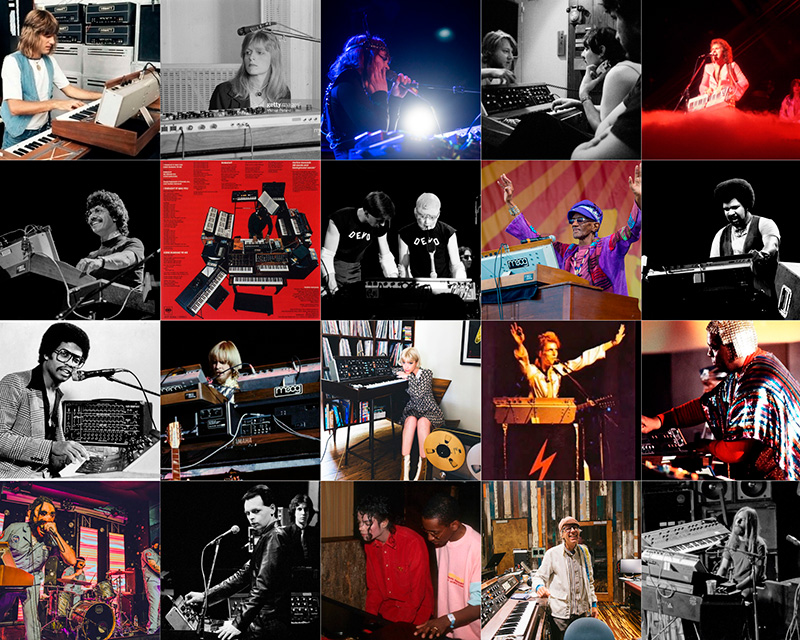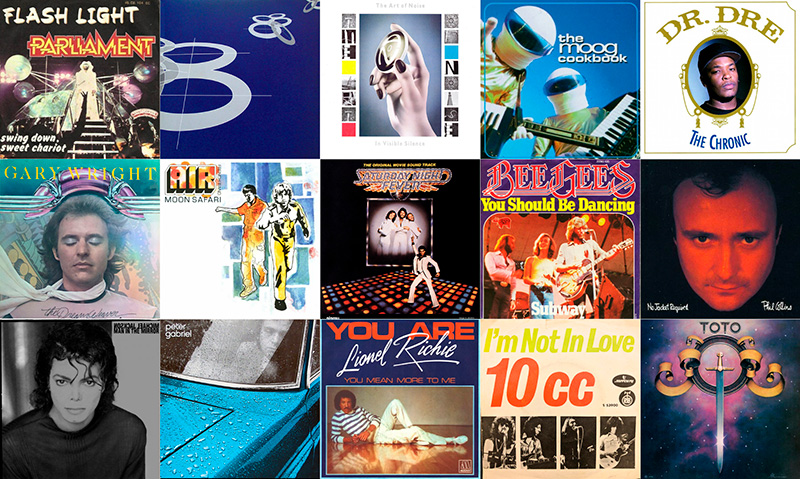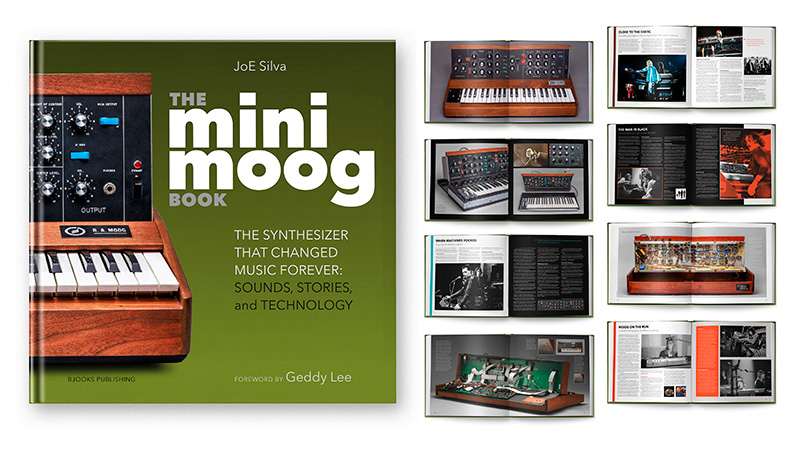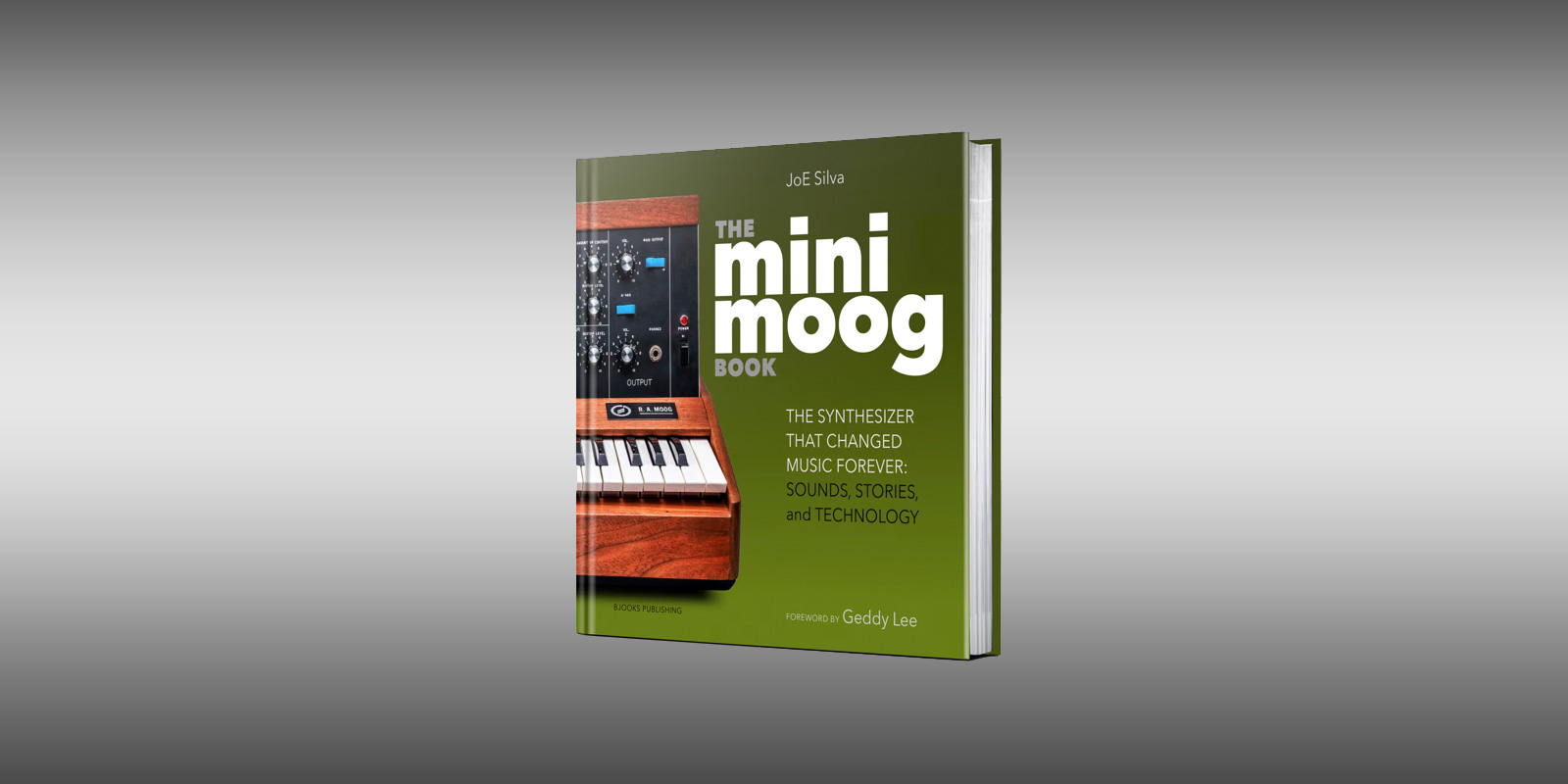Born in a pile of spare parts and rising to conquer the music world, there has never been any instrument like the Minimoog. Read the story of a musical icon, seen through the eyes of the engineers who built it, the artists who played it, and the visionaries who continue to support its legacy.
Copenhagen, Denmark, April 23, 2024 — Earlier this month, Danish independent book publisher Bjooks revealed the title and topic of their newest music history deep-dive, THE MINIMOOG BOOK, which takes an extensive look into the journey of the Minimoog synthesizer.
Now available to preorder through Kickstarter, this release is a monumental one for Bjooks founder Kim Bjørn.
“We’re pulling back the curtain on the history of one of the most iconic electronic instruments ever,” the author, designer, and electronic musician said of the storied monosynth. “The Minimoog’s significance is undeniable. This instrument was never restricted to just one type of music; it’s been used in jazz, rock, pop, experimental, etc. It was the first real, universally adopted synthesizer — and it changed the face of popular music.”
The book’s development — with more than 70 artist features, dozens of sound diagrams, and hundreds of historical and new images — has been in the works for over a decade.
An Artful Blend of Music History, Tech, Design & Pop Culture
THE MINIMOOG BOOK is a comprehensive look at the synthesizer that helped define modern music like no other. It blends thoroughly researched articles, exclusive interviews, and historical insights with never-before-seen photographs and schematics.
Throughout the book’s 368+ pages, readers will experience a deep dive into the history and mystery of the Minimoog, meeting the artists who have relied on its tone and character in their music from 1970 to present day. The secrets of the Minimoog’s unparalleled sound, the evolution of its manufacturing, and stories from the engineers who were there are now all in one place as a complete work for the first time.
“It’s a story, an educational resource, and also a primer on how to use the instrument,” Bjørn continued. “This is so much more than the historical aspect: there are patches, playing techniques, tech descriptions. If you pick up this book, you’re going to understand how to operate a Minimoog — well, any subtractive synthesizer — you’ve got the fundamentals of electronic music at your disposal.”
A must-have for any electronic musician, this release is as much for the longtime synthesizer enthusiast as it is for anyone with an appreciation for music history, design, photography, journalism, pop culture, and collectibles of all kinds.
“I believe this book serves as an enduring reference and celebration of one of the most important developments in musical history,” said Michelle Moog-Koussa, daughter of Bob Moog and Executive Director of the Bob Moog Foundation. “It will certainly be a staple in my personal research library.”
Book Highlights & What Readers Can Expect
- 70+ interviews with Minimoog artists spanning over 50 years
- Interviews with the engineers who designed and built the Minimoog
- The creation of a legend — from the Model A to the modern reissues
- Rare ads, promotional materials, photographs, and memorabilia
- 30+ patch diagrams of iconic sounds and playing techniques
- Schematics from the original designs
- Detailed Model D and Voyager timeline visuals
- Never-before-seen photo galleries of famous and infamous Minimoogs
- 368+ pages, printed on high-quality, environmentally responsible paper
Featured Minimoog Artists: Articles, Interviews & Photos
Opening with a foreword by prolific Rush frontman Geddy Lee, THE MINIMOOG BOOK is overflowing with insights, tips, and tales from some of the most notable musicians and producers in modern history.

Exclusive interviews: Keith Emerson, Rick Wakeman, Chick Corea, Tony Visconti (David Bowie), Devo, Bernie Worrell, Gary Numan, Air, J Dilla, SURVIVE (Stranger Things), George Duke, Jan Hammer, Gary Wright, Manfred Mann, Squeeze, Ultravox, Chromeo, Legowelt, Greg Kurstin (Adele), Steve Porcaro (Toto), Thomas Dolby, Graham Massey (808 State), Adrian Utley (Portishead), Will Gregory (Goldfrapp), Mac DeMarco, Yumiko Ohno (Buffalo Daughter), Roger O’Donnell (Cure), JUVENILE, Tom Coppola, Don Preston (Zappa), Geoff Downes (ASIA, YES), Heart, Ben Burtt (Star Wars), Blue Weaver (Bee Gees), and many others
Artist spotlights: Linda McCartney, Alicia Keys, Herbie Hancock, The Who, Kraftwerk, Hot Chip, Pink Floyd, The Police, Giorgio Moroder, Brian Eno, Klaus Schulze, and more
Exclusive Artist Quotes Found in THE MINIMOOG BOOK
“Every time I’ve used the Voyager or the old Minimoog for lead sounds, it always makes the impression. All of those records that I’ve done, it gives the thing that I really wanted it to deliver — a soaring guitar-like feel, even though it doesn’t sound like a guitar.” – Chick Corea
“The great thing about the Minimoog to me was how it suddenly gave us keyboard players a tool that gave guitarists a run for their money.” – Rick Wakeman, Yes
“My Minimoog was just packed with grease pencil numbers, so I would know where to turn the knobs to get the sounds… We had to rehearse just to learn how to change the patches in the middle of songs, and it had to be timed so that we knew we would be able to do all that and make it in time for whatever part of the song that needed to be played.” – George Duke
“It was a very good, clear manual as to how the oscillators worked, how the filter worked, and what the letters ‘ADSR’ all meant. That was my real introduction to proper synthesizers.” – Anne Dudley, Art of Noise
“I often love using a Mini and an Oberheim Two-Voice together, because the Two-Voice has got the top-end cut and the Moog’s got the low end and the rasp in the mids. It’s all brilliantly simple — I can whizz around on it live, I’m fearless with it.” – Adrian Utley, Portishead
“I used to do a lot of sound effects with it, and because we didn’t have a drummer — since I was doing music on my computer — each time I did a crash cymbal or a drum fill I would add some waves of white noise or similar. It was also used for the solo at the end of ‘La Femme d’argent’ — a flute thing.” – Nicolas Godin, Air
“Most of the time, I actually don’t process it, because then I feel like I lose the character. I do have a bass setting which is usually the two saw waves and then one octave above, and sometimes I’ll detune it just a hair.” – Greg Kurstin
“It was an eye-opening experience, to say the least, as I fiddled and twiddled with the knobs on its alien electronic landscape… It was, and still is, an essential and inspiring part of my keyboard arsenal. What a cool invention, eh?” – Geddy Lee, Rush

Bjooks has compiled a playlist of more than 50 videos showcasing a sample of the legendary musicians who have used the Minimoog in recordings and live performance environments. The playlist is available to explore here.
How to Order THE MINIMOOG BOOK
In the works for more than a decade with author, esteemed journalist, and music historian JoE Silva, this project has been a labor of love for all involved.
Now, Bjørn and THE MINIMOOG BOOK team are working hard to bring the book to publishing by way of Kickstarter — which is only possible with community support.
Bjørn has seen success utilizing the creative crowdfunding platform for past Bjooks releases, noting the vital role backers can play in bringing works like these books to life.
“Crowdfunding is an essential tool for projects like ours due to the significant costs of creating a high-quality book,” he emphasized. “Expenses such as paper, printing, distribution, and content creation, including photos and illustrations, all ads up.”
All Kickstarter backers of THE MINIMOOG BOOK will receive an exclusive collector’s edition (only available on Kickstarter) at a discounted price, featuring a unique serial number on each book, a limited-edition dust jacket, an add-on option to be included in the book by name, and more perks as the campaign progresses.
“Using crowdfunding, we can gather support directly from enthusiastic readers and fans like you, who believe in our project and want to see it come to life. This collaborative approach not only helps cover production costs, but also allows us to engage with our community and offer unique rewards and experiences to our backers.”
To preorder the book and support its production, visit the Kickstarter page here.

Publication Details & Specifications
Fact-checking and research assistance were provided by several people well acquainted with all things Moog, including contacts at The Bob Moog Foundation, EMEAPP, The Eboard Museum, Moog Music, and Cornell University. Minimoog photos are credited to Bryan Redding, Peter M. Mahr, and many others.
- Publisher: Bjooks (founded and run by Kim Bjørn)
- Author: JoE Silva
- Editor: Mike Metlay
- Foreword: Geddy Lee
- Page Count: 368+ pages in full color
- Dimensions: 25 x 25 cm. (9.6 x 9.6 in.)
- Binding: Hardcover with dust jacket
- Materials: High-quality, environmentally responsible paper (FSC approved)
- Country of Origin: Denmark
For more about THE MINIMOOG BOOK, visit bjooks.com.
About Bjooks
Bjooks is a boutique music tech publishing company started by author, designer, and musician Kim Bjørn. His first book, PUSH TURN MOVE, was published in 2017. This was followed by PATCH & TWEAK in 2018, which has since been referred to as the “Bible of Modular Synthesis.” Subsequent titles include PEDAL CRUSH (released in 2019), PATCH & TWEAK with Moog (2020), SYNTH GEMS 1 (2021), and PATCH & TWEAK with KORG (2022). Bjooks’ latest title is INSPIRE THE MUSIC, released in cooperation with Roland Corp. on its 50th anniversary in 2022. Learn more at bjooks.com.





